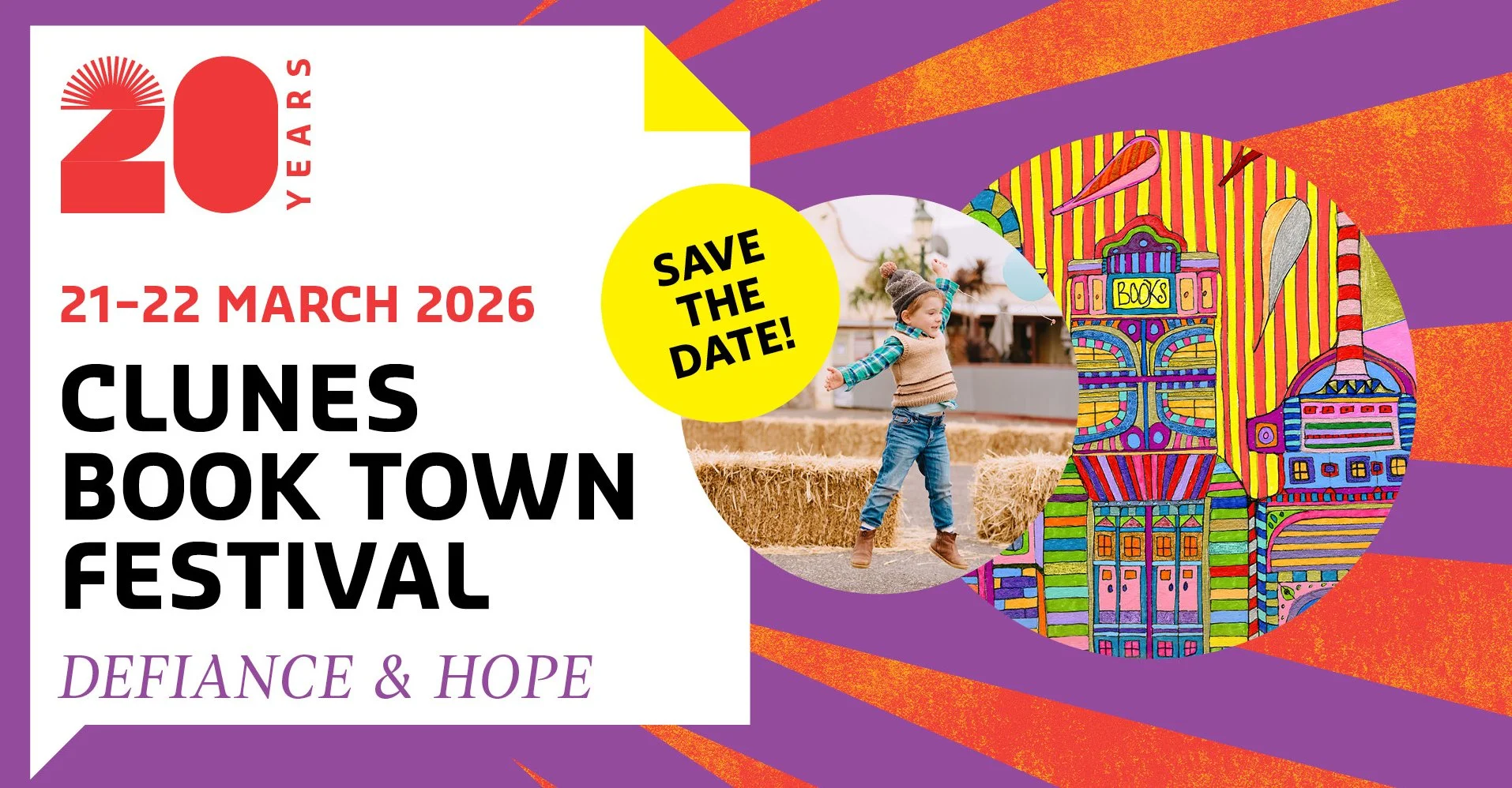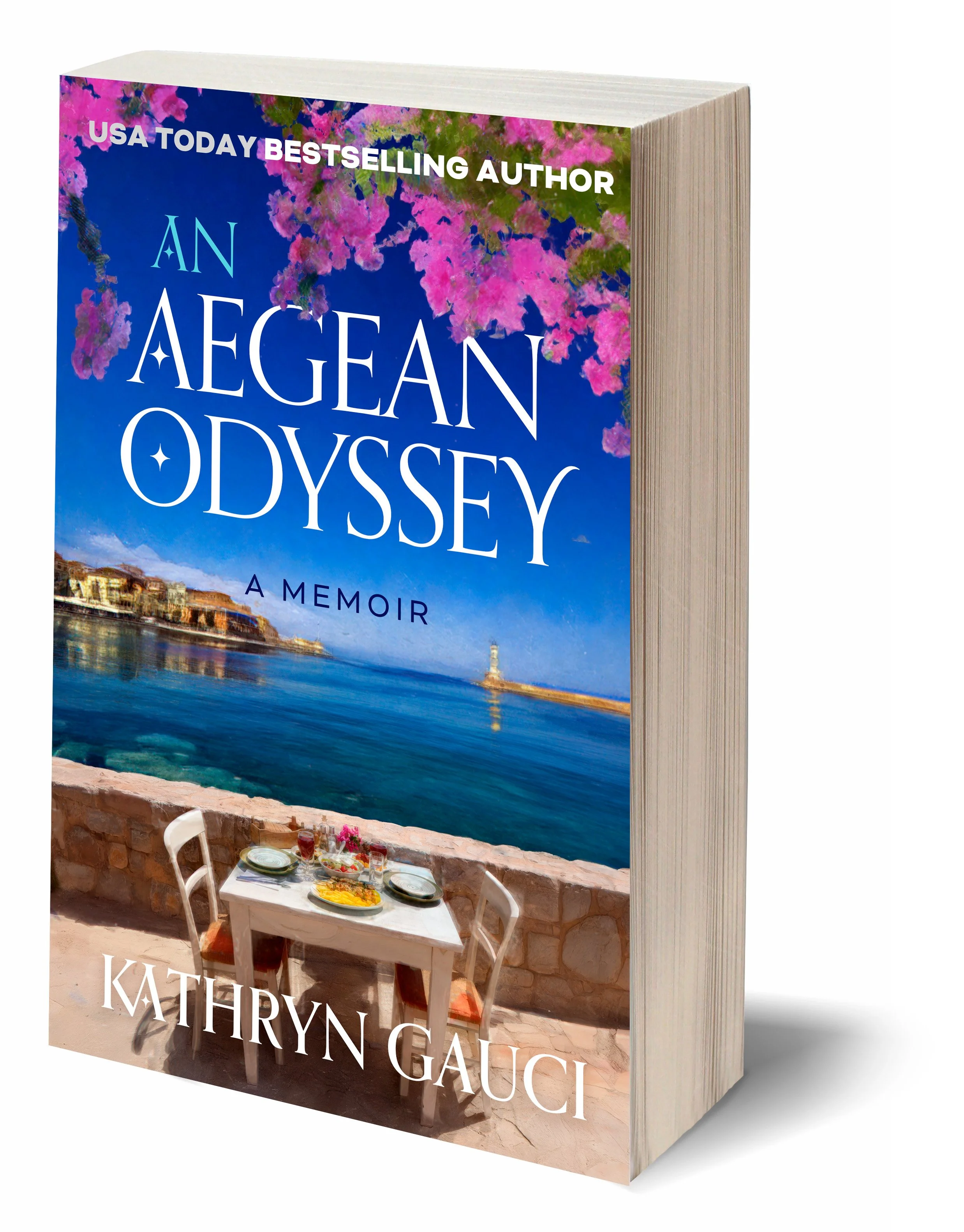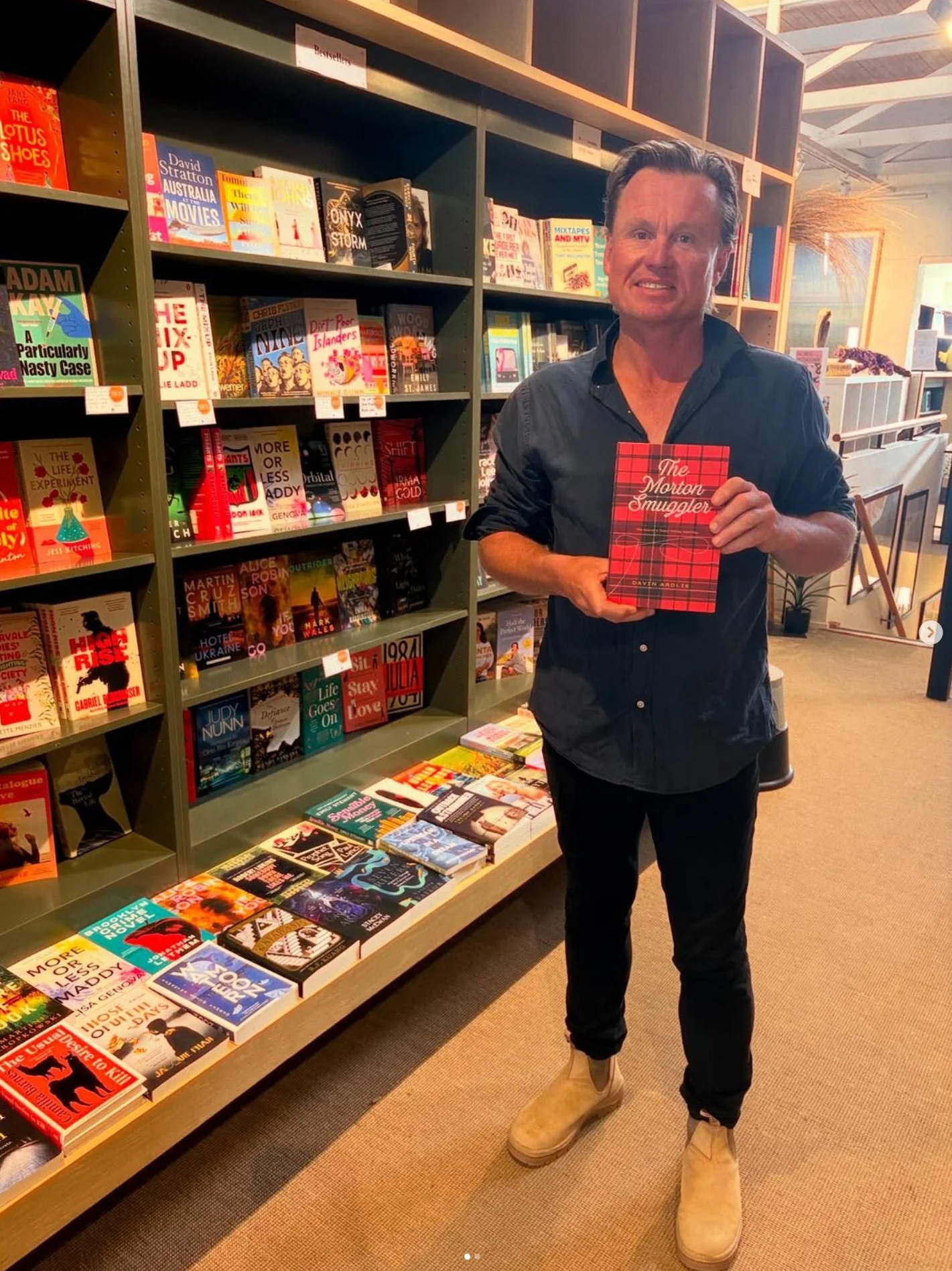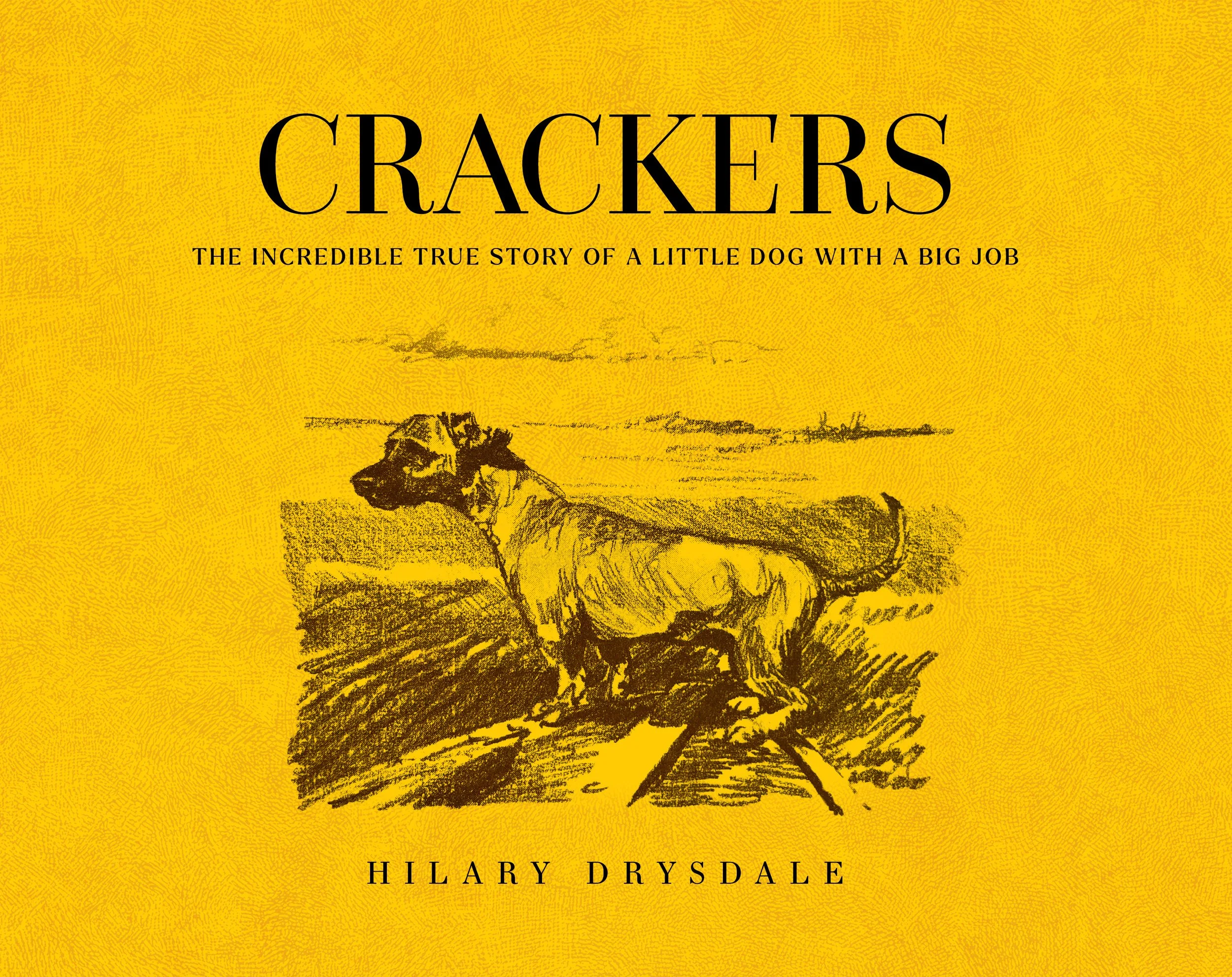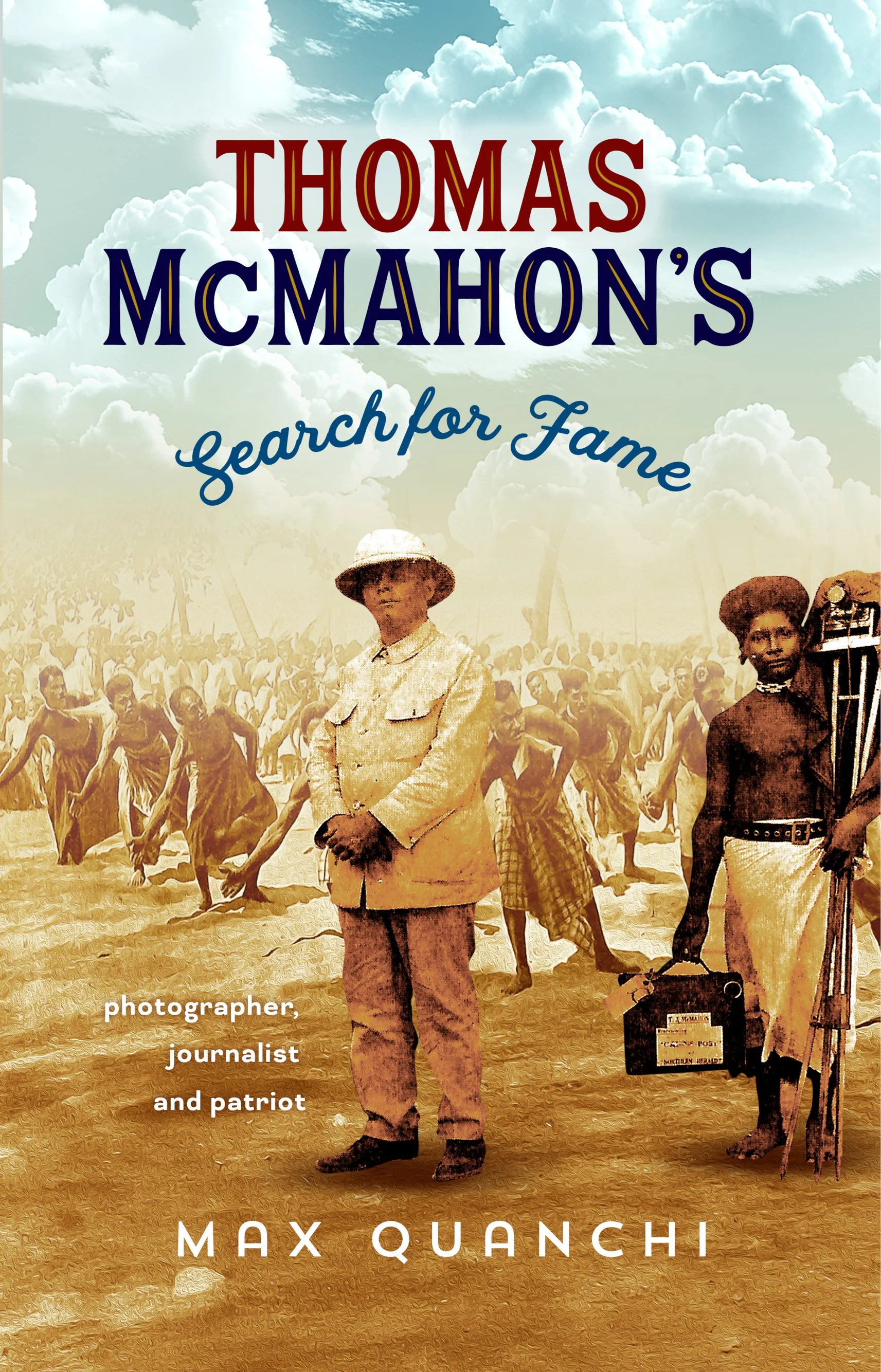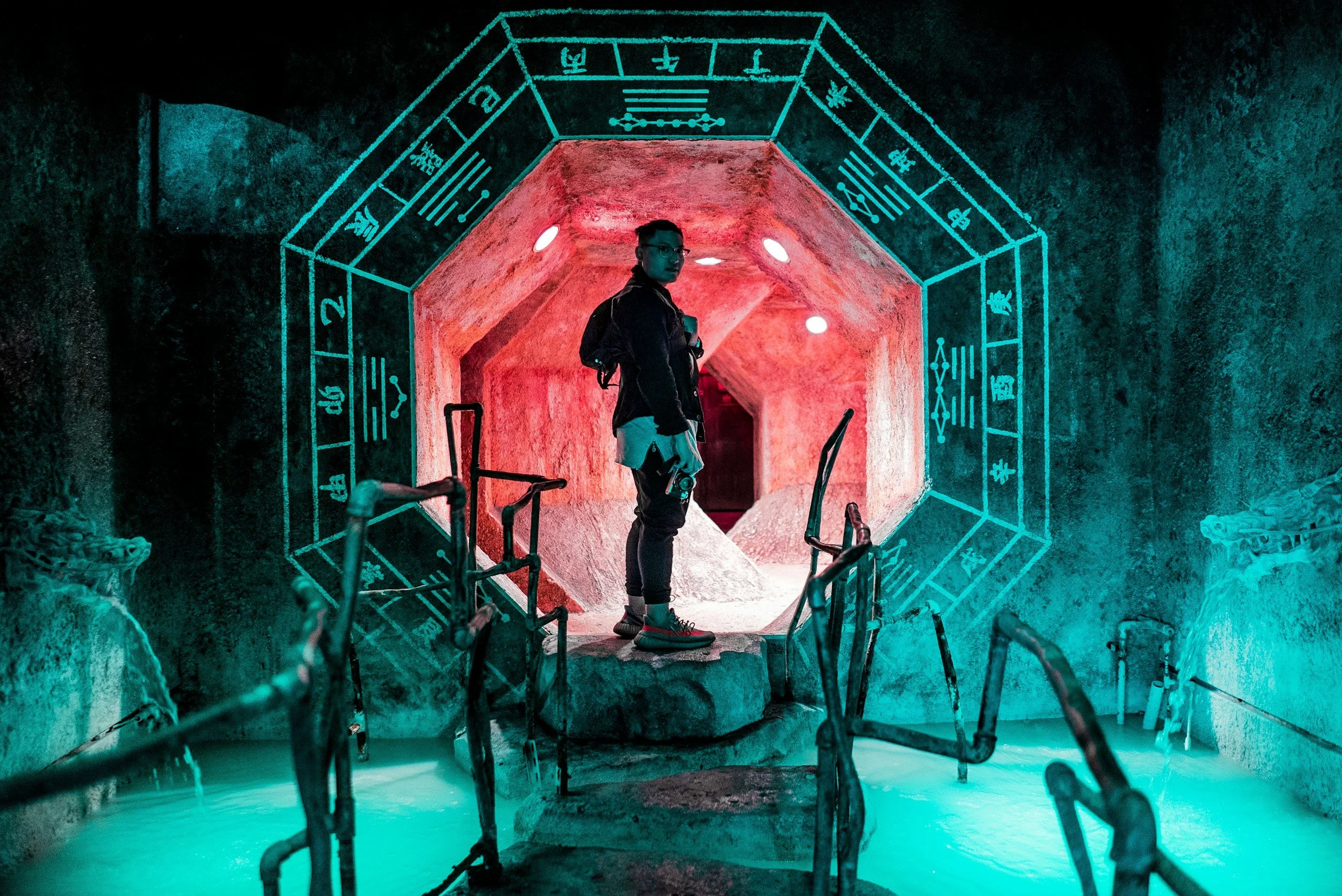For some reason, publishing attracts a plethora of scammers, ranging from reasonable quality books produced at ridiculously high prices, to no books at all produced, funds and scammer vanishing into the ether. This Guardian article details AI-generated staff members, deliberate misrepresentation, services that never eventuated, zombie office spaces, the same business popping up under multiple names and much more. If you have suspicions about a publisher, do some research before committing any funds. And report any shady businesses to the National Anti-Scam Centre— you might be helping someone else fall victim to these unscrupulous charlatans.
Public Lending Right is Right On (ELR/PLR)
Authors: please do not forget to register your book/s with the Public Lending Right scheme.
“Australian book publishers or creators—authors, illustrators, editors, translators and compilers—can be compensated for the loss of income through the free multiple use of their work in Australian public and educational lending libraries.”
Eligible books are books:
with an International Standard Book Number (ISBN)
which have been published and offered for sale within five years from the year of publication
which have a catalogue record in a national bibliographic database, eg SCIS or Australian National Bibliographic Database
whose creators are individuals (companies or organisations are not eligible creators)
with no more than five eligible creators.
Note: “Book” includes ebook and audiobook formats
The Society of Other History Lovers
Many independent authors write histories both local and of broader scope, or use historical research to inform their fiction. Historical societies can be a good way to network with other researchers and writers and access useful resources.
The Royal Historical Society of Victoria has an excellent online bookshop filled with interesting titles on Australian and Victorian themed history, both from independent authors and established publishers.
The RHSV assists researchers, advocates on issues related to Victoria’s historical heritage and supports affiliated local history groups. It produces regular newsletters packed with information. Members receive access to RHSV resources, archives and special events. Membership fees are as follows:
$90 for Individual Memberships
$40 for Student Memberships (student ID required)
$100 for Family memberships
$210 for Library/School Memberships
Clunes Book Weekend
Why not head out to the pretty little goldfield town of Clunes in March for the Clunes Booktown Festival? The festival features many events and stalls are open to both publishers and independent authors. I am aware of at least two authors who regularly take a table at Clunes, with positive results.
“Growing steady since 2007, the festival has a theme each year so expect the town to be dressed for the occasion, with roaming street performers, live music and plenty of local beverages and baked and grown produce on offer.”
Just two hours by train from Melbourne.
Bookbub Mastery
If you prefer the quick ascent rather than the long slog, then BookBub might be the tool for you.
Bookbub summarises itself as follows:
BookBub is a free service that helps you discover books you'll love through unbeatable deals, handpicked recommendations, and updates from your favorite authors. BookBub doesn't actually sell books. We simply introduce you to books you'll love that are available on retailers like Amazon's Kindle store, Barnes & Noble's Nook store, Apple Books, and others.
Gemini enumerates four points regarding the author-centric view of the service (featured deals) :
Submit a Deal: Apply for a "Featured Deal," offering your book for free or at a steep discount (e.g., $0.99).
Meet Quality Standards: Your book needs a professional cover, strong reviews (often 4.0+), and the first book in a series does well.
Pay a Fee: If selected (only 10-20% of submissions), you pay a fee based on your book's price, genre, and target countries.
Get Exposure: BookBub sends your deal to millions of relevant readers, generating huge downloads/sales and boosting your author platform.
Kindlepreneur has this to say:
After seeing what BookBub can do for readers, this has got to be awesome for the authors behind their recommendations, right?
And that's absolutely true. BookBub offers a second-to-none premium book promotion service for those interested. As a matter of fact, USA Today best-selling author and creator of The Self-Publishing Formula Mark Dawson has this to say about BookBub:
“BookBub is the gold standard when it comes to finding new readers, and they provide some of the best author resources in the business…”
And when he says it's the gold standard, I wholeheartedly agree. Let's review the ways that BookBub goes above and beyond the call of duty when it comes to handling your book promotion–both pre-order and new release.
BookBub Mastery by Nick Thacker shows authors how to how to get a Featured Deal…
...If you have a plan. In BookBub Mastery, you'll learn what BookBub really wants, and you'll learn how to give it to them. As a marketing platform it can legitimately change the lives of authors, so it's worth putting your best digital foot forward. Take control of your book marketing and launch your author career, using the world's best-ever book-marketing promotional platform. It's all here in BookBub Mastery — get started today!
For a rather more skeptical take on BookBub by Australian author Peter Ralph, checkout BookBub Rules in ebook format.
If Emus Wore Shoes, Which Ones Would They Choose?
Ganga Powell’s latest book of charming, whimsical poetry for children is out now, the poems beautifully enhanced by Eileen Curd’s illustrations.
‘If you like a good laugh,
These poems are for you.
They will make your funny bone grow
And blow your cares away!’
The book will be launched at (and will be available from) Blarney Books, 37 James Street, Port Fairy on Sunday 14 December. Kid friendly afternoon tea will be served and readings from the book performed.
You Seem Quite Intelligent... for an AI
The head of Microsoft AI discusses the risks of an AI agent that is able to simulate intelligence, yet have absolutely no inner life. Hundreds of billions of dollars are being spent, new models released every week by a variety of players, but fundamental problems and limitations persist.
Leave No Bookseller Unturned
Murdoch Books want to make sure their customers know where to buy their books. An excellent idea for independent authors when setting up their own sites…
Publisher Rocket and You
Authors uploading to Amazon and looking into ways to promote their title/s will eventually hear about the Publisher Rocket service. Publisher Rocket is a book marketing tool focusing solely on Amazon (which is the dominant online bookseller for both print and ebooks).
In the words of an author reviewer:
Publisher Rocket is essentially a research tool. It helps self-published authors understand what readers actually want, and how to connect with them with your books. But it's not just for self-published or independent authors—traditional publishers use it too.
Here are some things you can discover in Publisher Rocket:
What phrases Amazon buyers are actually searching for.
The psychology of how readers choose to buy books.
How much money readers are spending on certain niches and topics.
How much money specific books are making per month (for example, books that might be competing with yours).
Reddit has an interesting thread discussing the pros and cons of the service. Reviews on Trust Pilot are quite positive. To be used in conjunction with Dave Chesson’s blog (Chesson is the founder of Publisher Rocket)
Aegean Odyssey Review
Kathryn Gauci’s excellent memoir garners well-deserved praise online:
A review that absolutely made my day on Amazon and Goodreads. I have to share it with you. Thank you so much, Abzorba the Greek.
October 28, 2025
I’ve just finished Kathryn Gauci’s very personal memoir, and I’m slightly annoyed with her because it’s not longer. I’ve been so immersed in her self-awakening solo trip back to Greece after many years away that I didn’t want it to end so soon. I suppose that you’ll probably get more out of this book if, like me, you’re a hopeless Grecophile, but if you like travel writing in general, you’d better not pass this one up anyway.
Kathryn wasn’t sure she wanted to make this trip alone, since she had a perfectly good marriage, but, owing to circumstances, she went ahead anyway. Right at the very end of the book she makes a really valid point about travelling solo that I’ve often thought too, although never been able to put it into words. When you experience something on your own, it’s an entirely different thing from how it would be if accompanied by someone else, in this case, her husband. You meet people, experience feelings and emotions, see places in ways that wouldn’t be the same with someone beside you. It’s not better, it’s not worse, it’s simply different, but in such a way that you realise how much it enriches your life. If you can do it, then it’s 100% worthwhile.
Kathryn goes to places (islands, mainly) that I know well myself, so maybe that too, made her writings resonate more deeply with me. But if you’ve any experience at all of Greek people and culture, then surely you’ll also find this work totally absorbing. She has a wonderful gift for evoking in you mental pictures of the places she’s describing, the people she’s interacting with.
Kathryn Gauci is a living treasure that all avid book readers would do well to appreciate.
https://www.amazon.co.uk/.../ref=cm_cr_arp_d_rvw_ttl...
#memoirssetingreece #honorarygreek #windycitygreek #greekmemoirs #memoirs #bookssetinGreece #travelmemoirs #amazonkindlebooks #amazonunlimited
The Theban Cycle -- A Review
Tony Whitefield’s excellent The Theban Cycle has been reviewed at some length in The Greek Herald.
“On this note, we could certainly raise a glass to Mr Whitefield’s grounding evaluation, which helps to bridge the gap between myth and reality… an iteration of the Theban Cycle that will only get better with age, just like a connoisseur’s favourite red or white.”
The Theban Cycle is available here, along with several other of Tony’s books exploring Greek history, myth and culture.
The Theban Cycle
Imagine a storyteller in ancient Greece who makes his living telling stories about recent events, sometimes only two or three generations after the events took place. How different might these stories be to the ones written down over 500 years later?
Tony Whitefield retells the well-known Greek myth of the Theban Cycle, using the voice of his storyteller Peter. By imagining these ancient stories without the direct influence of gods or supernatural events on the participants, Tony attempts to unravel mythological narratives explaining what might have occurred.
It is the year 1189 BCE, and a group of people have gathered to listen to Peter the storyteller. A Phoenician prince named Kadmus sets off to locate his sister Europa who has mysteriously vanished from their hometown of Tyre. On his journey to find his sister, he meets his wife Harmonia and presents her with two special wedding gifts. Who could have possibly imagined that these simple gifts could play such an important part for generations to come in the story of the city of Thebes.
Tony Whitefield is a retired teacher and academic who lives on the Greek island of Limnos for several months each year. The Theban Cycle is his fifth book.
Morton Smuggler update
Davin Ardlie’s excellent The Morton Smuggler is getting some positive author feedback:
“A heartfelt, thoroughly entertaining read. Spans many parts of the world, with the author's experience and/or research in the various locations shining through. Highly recommended - commendations to the author.”
“What a thrilling tale of adventure, intrigue, love and loss. I was captivated from the opening chapter and couldn’t put it down. The ending had me in floods of tears, what a remarkable story.”
“The Morton Smuggler is one of the best books I’ve read - and I’ve read a lot, both for pleasure and in my work as a copy editor. The storyline takes the reader on a roller-coaster of experiences and emotions in various countries, always underpinned by the mystery of the Morton Smuggler. The resolution of the mystery is both satisfying and heartwarming.”
“Rupert took me on a journey far beyond fishing—a multi-city voyage of self-discovery. In his search for values to live by, found within the Five F’s, I witnessed Rupert’s transformation from boyhood into manhood. This character is at the heart of a story set in beautifully crafted locations and filled with characters of depth, all woven together in a storyline as intriguing as it is entertaining. Experiencing Rupert’s path feels like reading a novel of great importance before the fanfare and plaudits. It’s as if I have been entrusted with the secrets to a fulfilling life, straight from Rupert himself. If there were more Ruperts in the world, it truly would be a better place. His story will stay with me forever. Bravo!”
Moreton Smuggler is available directly from the author’s site in print, ebook and audio format, and also at @farrells_bookshop and @antipodesbookshop
Booktopia Book Distributor -- an Opportunity for Authors?
The new incarnation of Booktopia has a service that may be of interest to authors. The information below is taken from their website, and may be accessed directly here. In a world of limited distribution opportunities, this service may work for some authors, but read the fine print…
New suppliers
Booktopia has been inundated with enquiries and books from authors wishing to supply to Booktopia directly.
Over many years of perfecting our multi-million dollar Distribution Centre we are now able to offer publishers representation in the Australian marketplace. In 2017 we established Booktopia Publisher Services (BPS).
If you wish to have your books distributed by BPS, then please email bps@booktopia.com.au and our BPS team will respond shortly.
For all bookstores or businesses that want to set up an account with Booktopia Publisher Services to access supply of the books we distribute then please contact us by emailing bps@booktopia.com.au
Key benefits of distributing your books through Booktopia Publisher Services:
Supply into bookstores and business - BPS supplies product direct to bookstores, resellers and businesses. We offer unparalleled fast delivery to ensure bookstores and businesses can supply their customers seamlessly and efficiently.
Sell more units - Publisher's stock will be listed as immediately available for purchase and dispatch on Australia's leading online bookstores' websites and popular online marketplaces, ready for fast delivery to retailers, resellers and direct customers. Prices are constantly monitored to ensure they are as competitive as possible.
Bestseller lists - Sales via Booktopia and its customers are lodged with Australia’s Nielsen Bookscan. By being price competitive, this ensures that sales to Australians stay within Australia. Hence a Publisher’s bestselling titles are recognised as a bestseller which in turn influences the purchasing pattern of consumers and resellers in the Australian market.
Unique marketing opportunities - Direct access to over 4 million customers who have purchased from Booktopia and Angus & Robertson in the past decade of which 1.8 million are repeat customers.
Smart stock placement - Comprehensive access to the Australian market by holding Publisher stock in one of Australia's most sophisticated book distribution centres.
Better data - Partner with Australia's leader in book data expertise including Bibliographic content, optimising content for increasing sales and B2B+B2C digital/EDI ordering.
You do great content. We'll get it out there.
Crackers: A Cracking Good True Story
Some interesting news from Kirsten Drysdale, part of the team that put together Crackers, the fascinating true story of a small dog with a highly unusual talent: wrangling pretty much any species of African wild animal…
“I recently engaged Luke to design a book I wrote about Crackers, an adventurous little dog who was the hero of "Operation Noah" - an incredible wildlife rescue operation that took place in Zimbabwe in the 1950s/60s. I was a child in Zimbabwe at the time, but my father, Rupert Fothergill, was the country's head game ranger and led the operation, so I had access to the valuable historical material and memories which support this true story. Luke did a fantastic job helping us pull the book together and present it beautifully.
On a recent trip back to Zimbabwe I was able to distribute a number of hard copy books to friends, relatives and Safari Lodges. I have received an overwhelmingly positive response to the book, and have been reflecting on some of the lovely comments I have received.
Kathy said:
Hi Hils - oh my goodness- I’ve just read your book & just LOVE It! Sure did get the emotions going! Such brave men doing so much good (& of course Crackers!) And of course not to forget the amazing wives & families back home keeping the home fires burning so that the men could do their jobs knowing their families were in good & safe hands. Kudos to them too! Very strong & resilient woman. Thank you sooo much Hils. The book has pride of place on my coffee table.
Julia sent me photos of her son reading it to her grandchildren and said they loved it.
Shayne said she and her 90 year old mum couldn’t put it down.
Mags said she was going to find a film producer to make a movie out of it.
I have had lots of people ask if they can sell them for me and am in the process of hopefully getting some printed in Zimbabwe for them to have easier access.”
Crackers is available in hardcover.
What to Put at the End of Your Ebook
Some very good advice from master editor and book promoter Dr Euan Mitchell re. ebooks (and print versions for some of the items)
a. Include your website's address as a clickable link.
b. Include the covers, blurbs and shout-lines for your other novels.
c. As part of intriguing your readers with blurbs, etc, also include clickable links to FREE SAMPLES of your other novels. (Kindle offers the first 10-20% of any novel as a free sample to any reader.)
d. Include clickable links to your socials.
e. Encourage readers to review your novel on Amazon and actually explain why it's so important.
f. Acknowledgments. This is more about your behind-the-scenes story that readers can really connect with, rather than a list of names that don't mean much to most readers.
g. Include a clickable link to your pages on Goodreads, the world's biggest book discussion/review forum.
Tartan it Up: How to Present Your Book Morton Smuggler style
Davin Ardlie’s fantastic new book The Morton Smuggler is now available at his website. It’s a sweeping saga about love, loyalty and growing up:
Rupert Johnson’s path to an independent mind was always going to be unconventional. It was planned that way. But he wasn’t supposed to go alone. Rupert is destined to learn the hard way.
India. Scotland. Australia. Tunisia. His letter-writing and his fishing are the only constants, beyond independence. Above all else he dreams of the day he can lay claim to a Morton Smuggler, the world’s most elusive fly fishing reel. The Morton Smuggler cannot be purchased; it can only
be earned.
Against the hard lessons from wartime tragedy, stubborn nostalgia and the many injustices of existence, Rupert creeps towards an understanding of the things in life that can be felt but never seen.
Towards a Morton Smuggler.
Dav sent me a copy the other day, and the packaging made receiving it rather special: a good strong mailer, two nicely designed stickers and a tartan band, plus the address label. So order one today and reward an author willing to put effort into presentation as well as content.
Successful Launch of "Bouncing Back" by Peter Jerijian
Peter Jerijian’s entertaining memoir Bouncing Back was launched in June. Here is Peter’s report on the event:
We had a great evening at the Book Launch on June 21. A fairly good numbers of people attended, including some local councillors, members of parliament and the City of Greater Dandenong Mayor, Jim Memetti. Also the editor and illustrator who worked on the book.
We had a slide show and an MC who ran the event and interviewed me, followed by questions from the audience, and a nice supper so people could socialise. It was a fun and very pleasant evening.
Cameron Lucadou-Wells, the journalist from the Dandenong Star Journal, also attended and wrote an article about the book launch, (page 14 July 8) as well as doing an interview and an article about the book beforehand (page 15 June 10). You can find them on their digital website.
I was also contacted by Laurie Nowell, media manager at AMES who interviewed me and wrote an article in the AMES magazine. (See the link above)
Thomas McMahon's Search for Fame
Max Quanchi, author of Thomas McMahon’s Search for Fame, has been active on the promotional front…
I have been busy posting it around and my McMahon book has been getting an airing in the Newsletters of:
International Association for Small island Studies (ISISA)
Pacific History Association (PHA)
Pacific Arts Association (PAA)
And I sent copies for review to the following journals
History of Photography
Journal of Australian Studies
Australian Historical Studies
Journal of Pacific History
Journal of NZ and Pacific Studies.
Pacific Arts.
and to newspaper review editors (The Australian, The Age, SMH,and Courier- Mail)
ISBN: 978-1-922958-94-5
Blurb: Thomas McMahon’s photographs and reports from the southwest Pacific appeared in capital city and provincial newspapers in Australia and New Zealand, and globally in pictorial encyclopedia, books, magazines and postcards and in his own lantern slide lectures. He visited Papua and German New Guinea, the Solomons, Vanuatu, Fiji, Nauru, Banaba, Norfolk, Lord Howe Island, Kiribati, and the Marshall Islands but the thousand photographs of the Islands that he published between 1915 and 1925, after self-funded expeditions across the region, failed to attract the coveted Fellowship of the Royal Geographical Society that he wanted. In 1922, he turned to another career, this time as a paid journalist with a Brisbane newspaper, as their travelling back-country reporter and photographer.
He was probably the most recognized photographer of his day for both his Pacific and Queensland, Torres Strait and Northern Territory photography and certainly one of the best-informed journalists of the day who could say “I was there” when boosting Australia’s trade and commercial potential in the Islands, and in his later career, in Northern Australia.
After his death in Brisbane in 1934 he was forgotten and was rarely cited in studies of photography, journalism or Australia’s Imperial posturing after WWI. His published photographs can now be found in the bound periodicals section of libraries, and digitally through Trove, and in the works of colleagues who borrowed his images for their own books and articles. Thanks Tom, as he was known, for a wonderful archive of Australia and the Pacific in the early twentieth century.
Balwyn Remembered
Marion Weir explores her memories of Balwyn in the years following World War II, when children had a freedom to rove and explore that is unimaginable today.
“Although there was no sense of abundance so far as items for sale, this was made up for by the friendly exchanges between shopkeeper and customers. People were addressed by their names and enquiries made after each other’s families. I don’t believe it was just my youth that led me to feel that, above all, there was no hurry, just a feeling of limitless time.”
And a paean to the centrality of sport to Melbourne life in the 1950s:
“The sporting arena was the perfect place to lift the spirits of the locals. For a few hours on a Saturday arvo they could forget the grind of meaningless, poorly paid jobs, of unemployment and living in overcrowded, often slum like housing with little hope of bettering their circumstances. The honour of the community was at stake and the on-ground rivalry was their supporters’ Culloden, their battle of Bosworth Field. ”
Available here.
Slop Until You Drop
The gates to AI Hell have been opened wide, and out flows an endless stream of automatically generated and often disturbing rubbish to distract those enchained to their phones. Cue the Dead Internet theory. Ironically, this eerie, pointless slop is used by other AIs for ‘training’, setting up a downward spiral of declining quality. Combined with the drastic AI-led decline in search engine quality with results drowning in AI hot-takes and sponsored links (we’re looking at you, Google), the Internet is no longer looking like a place by humans and for humans, but an infinite chamber echoing with the meaningless chatter of trillions of bots. One suspects were are at the end stage of this process.





